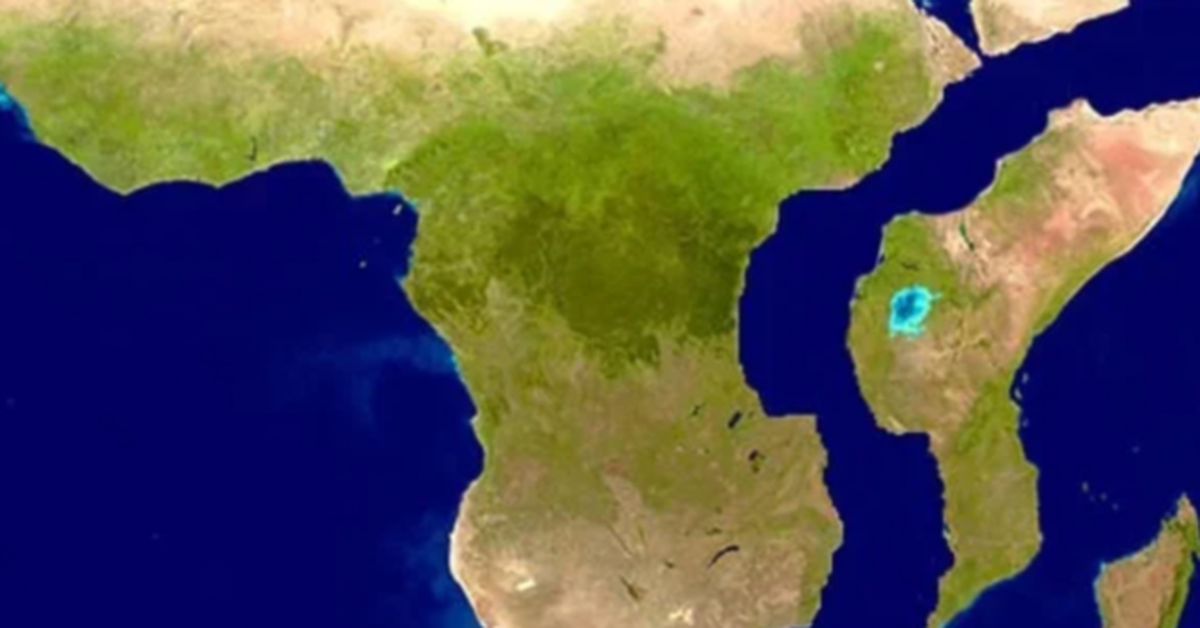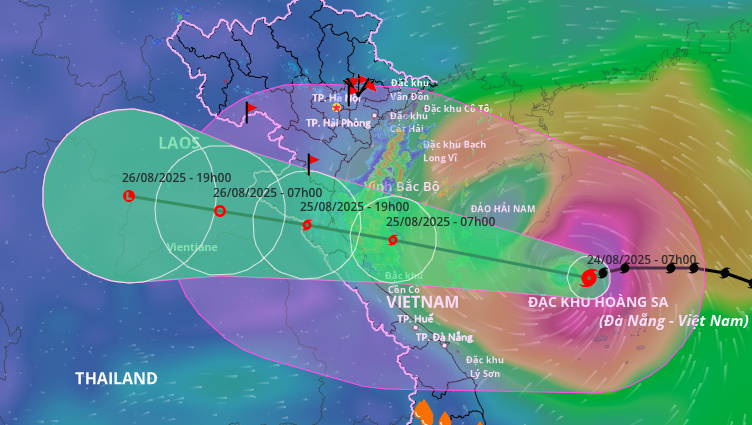
Uneven cooling rates can affect plate tectonics, which in turn has a knock-on effect on climate, ocean currents, and even natural disasters such as earthquakes, volcanoes, and tsunamis - Photo: AI
A group of scientists from the University of Oslo (Norway) has just published a surprising study: one half of the Earth is cooling significantly faster than the other half and the cause is related to the way continents and oceans have been distributed over the past hundreds of millions of years.
Research published in Geophysical Research Letters found that the hemisphere containing the Pacific Ocean loses more heat than the hemisphere containing Africa, Europe and Asia.
The reason is that seawater conducts heat better than land: the seafloor is thinner, and in contact with the huge volume of water above, allowing heat from the Earth's interior to escape more easily. In contrast, the denser, thicker land acts as a "thermos" that retains heat.
The Earth is a cooling "sphere"
Scientists explain that beneath the crust is the mantle and the red-hot core, where heat from the planet's formation, along with heat from radioactive decay, is generated. This liquid layer not only warms the planet from the inside but also maintains the magnetic field and gravity, keeping the atmosphere protective of life.
Over time, Earth will continue to cool, until it becomes a cold rock like Mars. But interestingly, the cooling rate is uneven: over the past 400 million years, the Pacific Hemisphere’s mantle has cooled about 50°C faster than the African Hemisphere.
To find out, the team built a model that divided the Earth into two hemispheres—the African Hemisphere and the Pacific Hemisphere—and then divided the surface into 0.5° grids to calculate how much heat had accumulated and escaped over millions of years. They combined data on the age of the seafloor, the position of the continents, and tectonic movements going back 400 million years, to when the supercontinent Pangaea existed.
Previous similar studies had only gone back about 230 to 240 million years. The new model nearly doubled the time frame, allowing scientists to trace the history of heat loss much further.
Surprisingly, the Pacific Hemisphere was once warmer, possibly because it was “trapped” by the supercontinent Rodinia that existed between 1.1 and 0.7 billion years ago. As the continents separated and piled up on opposite sides, this hemisphere was covered by a vast ocean, which allowed heat to dissipate more quickly.
The earth is still moving every day
Although it is invisible to the naked eye, the Earth's surface is constantly moving. This phenomenon is called continental drift and is a result of plate tectonics.
At the bottom of the ocean, along mid-ocean ridges, lava from the molten mantle continually rises, cools, and forms new seafloor. Meanwhile, old seafloor is “swallowed” deep below the continents at subduction trenches, where it is re-melted.
The mantle below acts like a giant “conveyor belt”: convection currents in the mantle push one crustal plate out, pulling another in. As the mantle gets hotter, the tectonic plates move faster, sliding past each other or colliding violently, causing earthquakes, volcanoes, and mountain building.
Today, the continental distribution with Europe, Asia and Africa concentrated close together in one hemisphere, while most of the other hemisphere is submerged in the vast waters of the Pacific Ocean, makes the rate of heat loss from the Earth unbalanced.
Vast ocean waters transfer heat away more quickly, while dense continents retain heat longer. As a result, one half of the planet, the Pacific side, is cooling significantly faster than the other.
Scientists believe that thermal fluctuations inside the Earth are not only a matter of geology but are also linked to the future of all living things on the planet.
Uneven cooling rates can affect plate tectonics, which in turn has knock-on effects on climate, ocean currents, and even natural disasters such as earthquakes, volcanoes, and tsunamis.
In the long run, continental displacement will change the habitats of a wide range of species, forcing them to adapt or face extinction.
For humans, understanding these silent but powerful processes not only helps predict risks, but also shows that we live on an ever-changing planet where “stability” is only temporary.
Source: https://tuoitre.vn/mot-nua-trai-dat-dang-lanh-di-nhanh-chong-so-voi-ben-kia-20250813153143377.htm



![[Photo] Party and State leaders meet with representatives of all walks of life](https://vstatic.vietnam.vn/vietnam/resource/IMAGE/2025/8/24/66adc175d6ec402d90093f0a6764225b)


![[Photo] Phu Quoc: Propagating IUU prevention and control to the people](https://vstatic.vietnam.vn/vietnam/resource/IMAGE/2025/8/24/f32e51cca8bf4ebc9899accf59353d90)
































































































Comment (0)